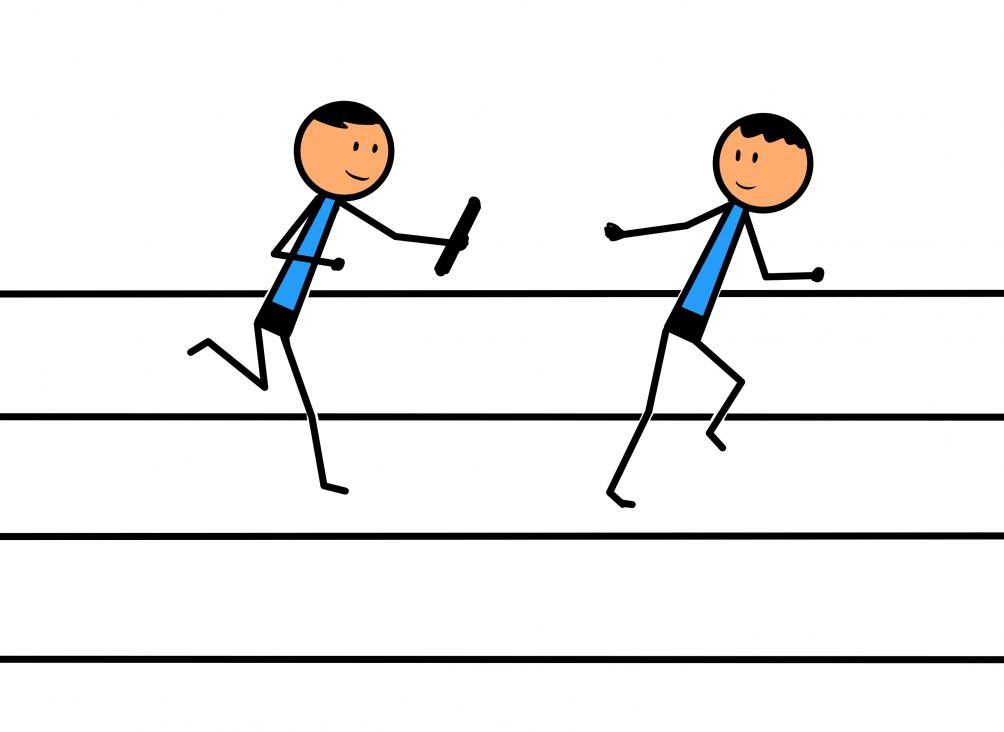Speaker 1 – “That’s me at the end of my talk, so I will now hand over to my colleague John.”
Speaker 2 – “Erm…thanks…but my name is Brian!”
Yikes!
A team presentation is not easy. I witnessed this exact exchange (apart from changing the names) between two colleagues recently. While this was a particularly bad example of teamwork, for me it encapsulated the spirit of far too many so-called ‘team presentations’ I have seen over the years.
Team presentations have the potential to be extremely positive experiences, in terms of the preparation, the delivery and the impact on the audience. Two voices are more engaging than one, two heads are better than one and a tangible chemistry can develop between the speakers. In essence it is like that old saying about the whole being greater than the sum of the parts.
In practice, though, I have seen many more negative team presentations than positive ones. How can we avoid the risks and what practical steps can be taken to make both speakers look good?
Let us start with the most dangerous part of a team presentation.
Team Presentation Tip 1 – The Handover
The riskiest part in my view is the handover from one speaker to another. It can happen once or it may happen multiple times in a talk. It is often done badly. While the first speaker may usually get the name right they often literally have no idea what their colleague is going to say. Or the second speaker is not quite ready to start or is not even paying attention.
The handover is also the riskiest part of the 4 x 100 metre relay in athletics where a dropped baton can mean the fastest team on paper fails to win and can end up finishing in last place. Track teams will spend rehearsal time focussing only on handovers. In mechanical terms, the first runner starts to decelerate slightly at a certain point, while the second runner starts to accelerate and wants to be at a high speed by the time they take the baton.
This analogy from athletics is useful for presentations too. I have a two-part suggestion that I want to share about handovers.
Firstly, if you are the speaker handing over the baton then know what your partner is going to cover and how they intend to start. Say something brief about them, their topic and their opening point.
Secondly, if you are the speaker taking the baton then be fully alert and ready. Know exactly when and how your partner is going to finish. Take the baton confidently, thank them and go off on the front foot.
Devote some time to work together with your colleague specifically on all the separate handovers – I can guarantee it will pay off.
Team Presentation Tip 2 – The Mentality
Go into all aspects of the presentation (from the initial preparation to the final delivery) with the mindset of being judged only as a team. Too many speakers worry exclusively about their own ‘score’ and pay little attention to the team output. In the athletics relay if two runners run great legs but two runners run poor legs then the team will get a poor result. Nobody will remember or care about the two great legs.
Treat a team presentation in exactly the same way as the athletics relay. Do the first planning session together, understand both halves of the talk, share slides with each other well in advance and rehearse together.
Team Presentation Tip 3 – The Body Language (when not speaking)
Many speakers have a reasonable idea of the importance of body language (at least in theory, if not in practice) when they are presenting. Fewer speakers, though, understand body language when their partner is speaking. Most of the audience will be focussed on the person speaking but at certain points they will be looking at the partner not speaking. What do you normally do when you are not speaking?
Do you focus your attention on your partner and look interested?
Do you look bored or distracted?
Are you checking your phone for text messages?
Are you signing your Christmas cards or playing solitaire on your tablet?
The two examples in the previous sentence are real examples from the world of politics!
Think very carefully about how you come across when you are silent – they will notice pretty much everything about your body language and facial expression.
Conclusion
Presenting with a colleague is a regular part of business life. This provides an opportunity to create a rewarding experience from beginning to end if it is done right. Approach it from day one with a team mentality, really work on your handovers and be aware of your body language. Do all this and you give you and your partner a good shot at success.
Oh, and get their name right!
Gavin Brown
Director
Speak With Impact


